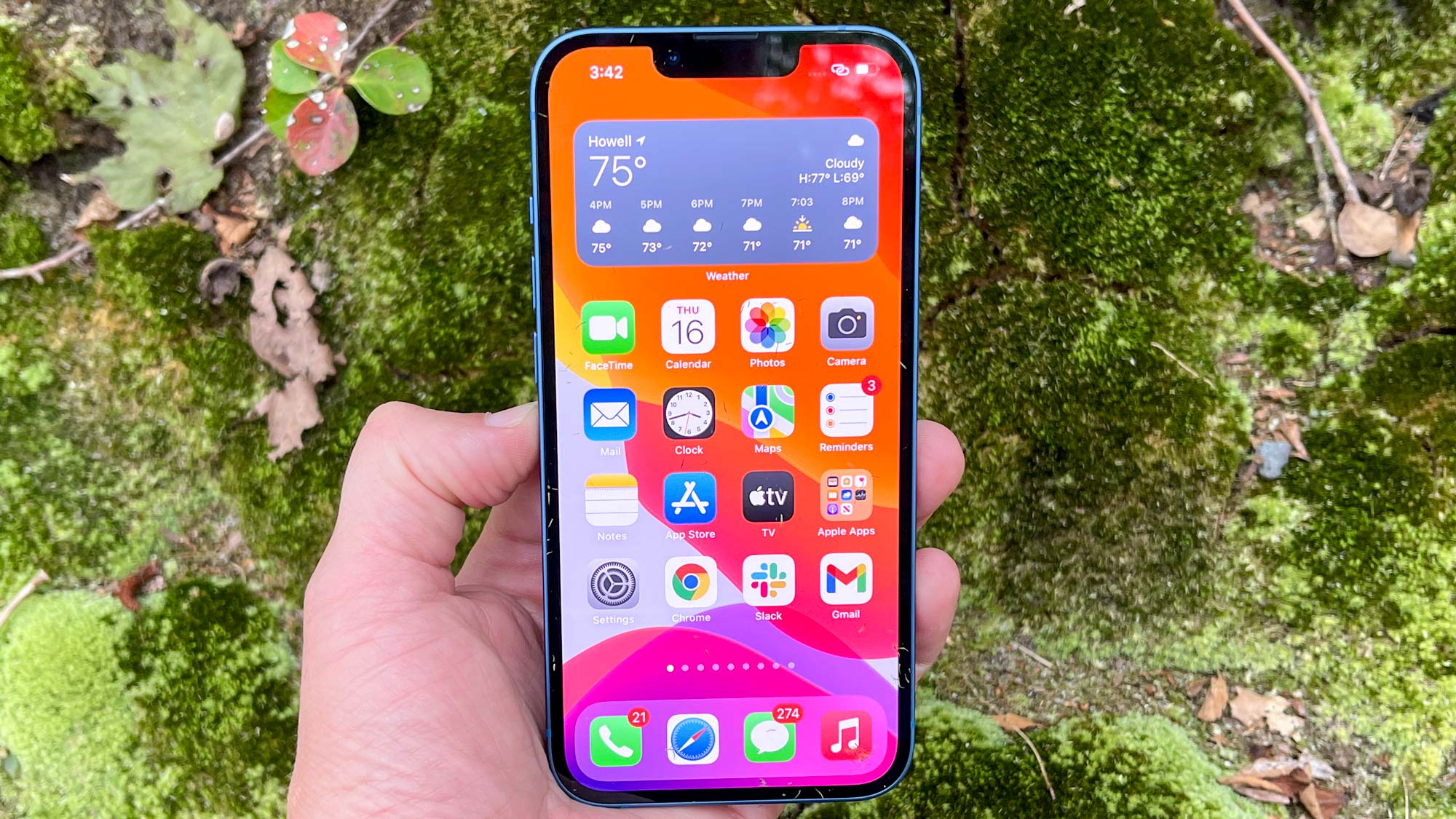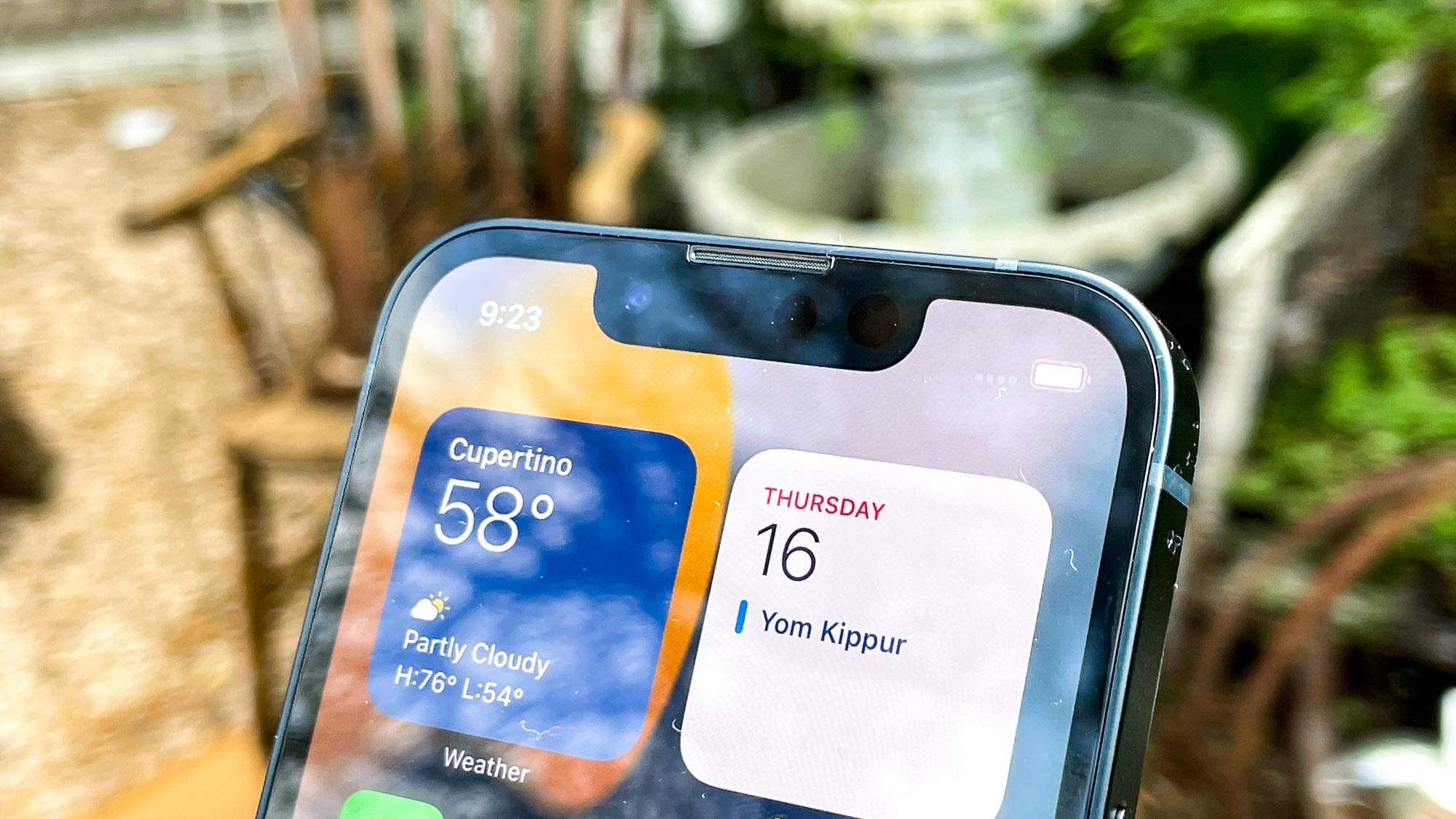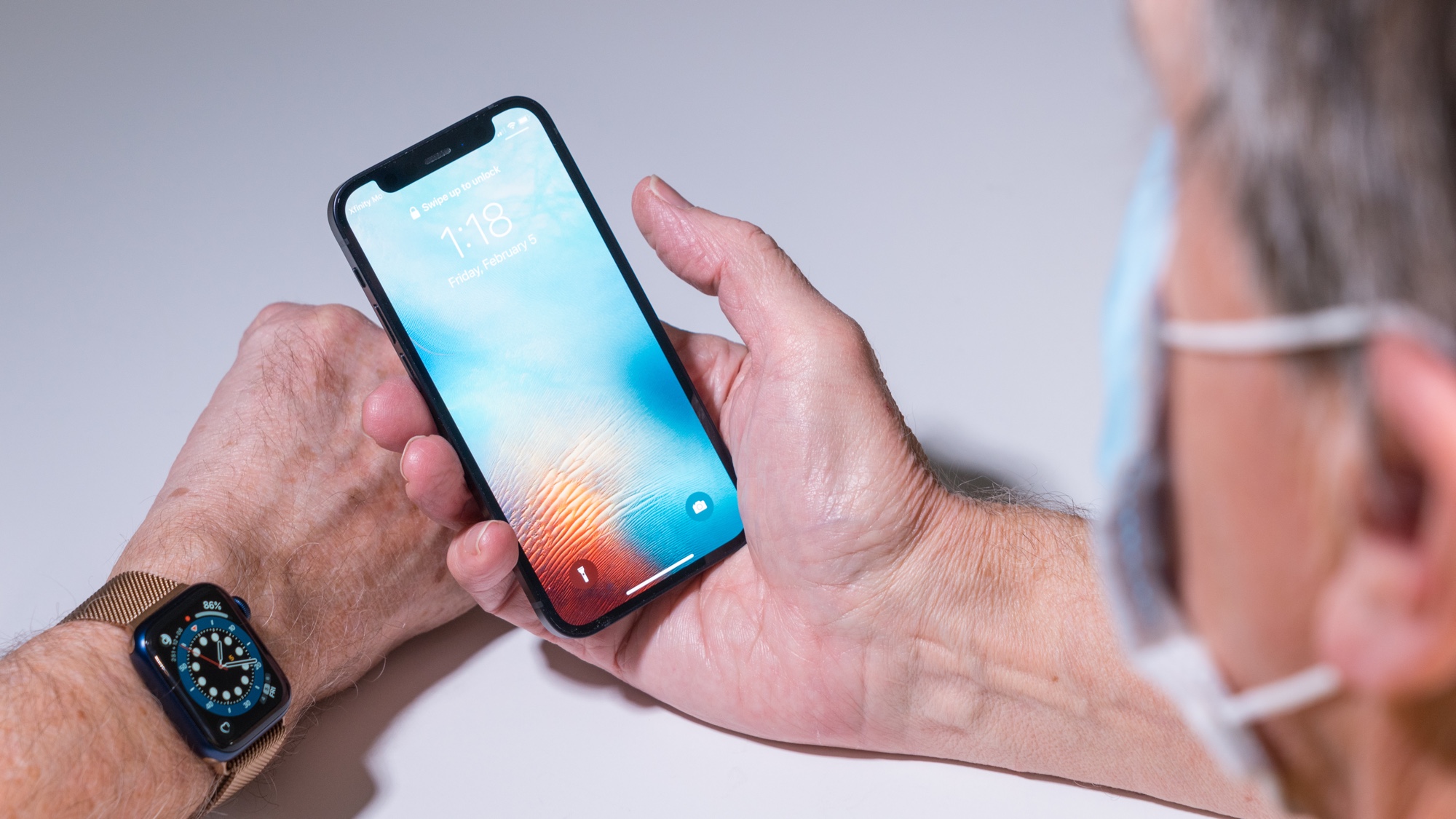iPhone 13 is great — but it suffers from one major flaw
It's still too hard to unlock the iPhone with a face mask on

The reviews are in, and all four iPhone 13 models have set the standard for smartphones once again. The iPhone 13 Pro Max is pretty close to perfect with improved cameras, impressive battery life and a stellar display with a dynamically adjusting refresh rate. The iPhone 13 Pro is essentially the same, only $100 cheaper. And the iPhone 13 and iPhone 13 mini have their strengths, too — they're certainly more than afterthoughts to the iPhone 13 Pro options.
And as good as these phones are, they're still damn hard to unlock.
- iPhone 13 vs. iPhone 13 Pro: What's different
- iOS 15 review: A better iPhone experience
- Plus: Amazon reportedly working on a supersized Echo Show and super-smart soundbar
I'm not talking about when you're in the comfort of your own office — offices... now there's a name I haven't heard in a while — or even outside in the open air. In those situations, the iPhone 13 models unlock via Face ID, same as every Apple phone since the iPhone X. But when you're out and about and around other people wearing a mask, as you should be in this era of COVID-19 Delta variants, unlocking an iPhone 13 is as complicated as ever.
Face ID is as secure as it is because it reads your *whole* face, not just the area around your eyes or a flattened area of your kisser. That's why fooling Face ID is hard, and why you can use it to verify mobile payments in addition to unlocking your phone. But slap on a face mask, and the iPhone's TrueDepth camera can't see your mouth or the curves of your chin. And that's when you have to meticulously tap in a passcode, as if you were living in an earlier uncivilized era.
It didn't necessarily have to be this way. Apple had some options at its disposal to simplify iPhone unlocking with the iPhone 13 and either couldn't implement them or chose not to.

The most obvious change would be to add some sort of in-display fingerprint sensor, not unlike the ultrasonic sensor found in the Galaxy S21 lineup. In-display sensors have become so ubiquitous on the Android side, you'll find them included in midrange devices these days — certainly phones that don't command the iPhone's price tag.
The trouble with in-display sensors is that they can be hit or miss — mostly miss, based on some of the phones I've reviewed. It can take some effort for these sensors to read your finger properly; on some phones it takes me a couple of tries to successfully unlock with an in-display sensor. For Apple — which prizes the experience of its users above a lot of other factors — that would be a non-starter, and understandably so. Apple's not going to use such a sensor unless it works all the time, without fail.
Sign up to get the BEST of Tom's Guide direct to your inbox.
Get instant access to breaking news, the hottest reviews, great deals and helpful tips.
But there's more than one way to read a fingerprint, which Apple surely knowns since it uses this method on some iPads. You can also embed a fingerprint sensor in a device's power or Home button. Samsung does this with the Galaxy Z Fold 3, and Apple does, too with both the iPad 9 and iPad Air 4. Why it choose to skip that approach with the iPhone 13 is something for Apple to explain.
Can Face ID get a fix?
It's not as if Apple has been sitting around twiddling its thumbs while mask-wearing iPhone users have waited for relief. iOS 14.5 introduced a workaround that lets you unlock your phone if you've got an Apple Watch on, using proximity sensors. But this only goes so far. Not only can't you verify payments with this method, it very obviously requires you to be wearing an Apple Watch. For some of us, that's just not going to happen. And any answer to "How do I unlock my new $699 or more phone?" that begins "Well, first buy a $199 watch" is not a very good answer at all.

I'm holding out hope that there is a fix to the iPhone's face mask woes, and that it will be implemented with a software fix down the line. Prior to the iPhone 13's launch, a rumor emerged that Apple was testing out Face ID hardware that would allow the unlocking feature to work even on people wearing face masks. If that feature wasn't ready when the iPhone 13 debuted, the rumor went on, it could always be enabled later, once Apple fine-tuned the software. There were even leaked images of dummy prototypes Apple employees were supposedly using to test things out.
Now, this could be another one of those swing-and-a-miss rumors that pop up before a phone launches, and there could be no such update in the works. But it's not completely implausible, and it certainly beats resigning yourself to fiddling with a passcode between now and the iPhone 14 launch.
Like it or not, masks are going to stick around for a while — even if COVID is brought to heel, there's still the small matter of climate change-triggered wildfires that will require us to don protective facegear every so often. As good as the iPhone 13 models are, they'd be even better if Apple could figure out a way to reflect our new reality.
Philip Michaels is a Managing Editor at Tom's Guide. He's been covering personal technology since 1999 and was in the building when Steve Jobs showed off the iPhone for the first time. He's been evaluating smartphones since that first iPhone debuted in 2007, and he's been following phone carriers and smartphone plans since 2015. He has strong opinions about Apple, the Oakland Athletics, old movies and proper butchery techniques. Follow him at @PhilipMichaels.

